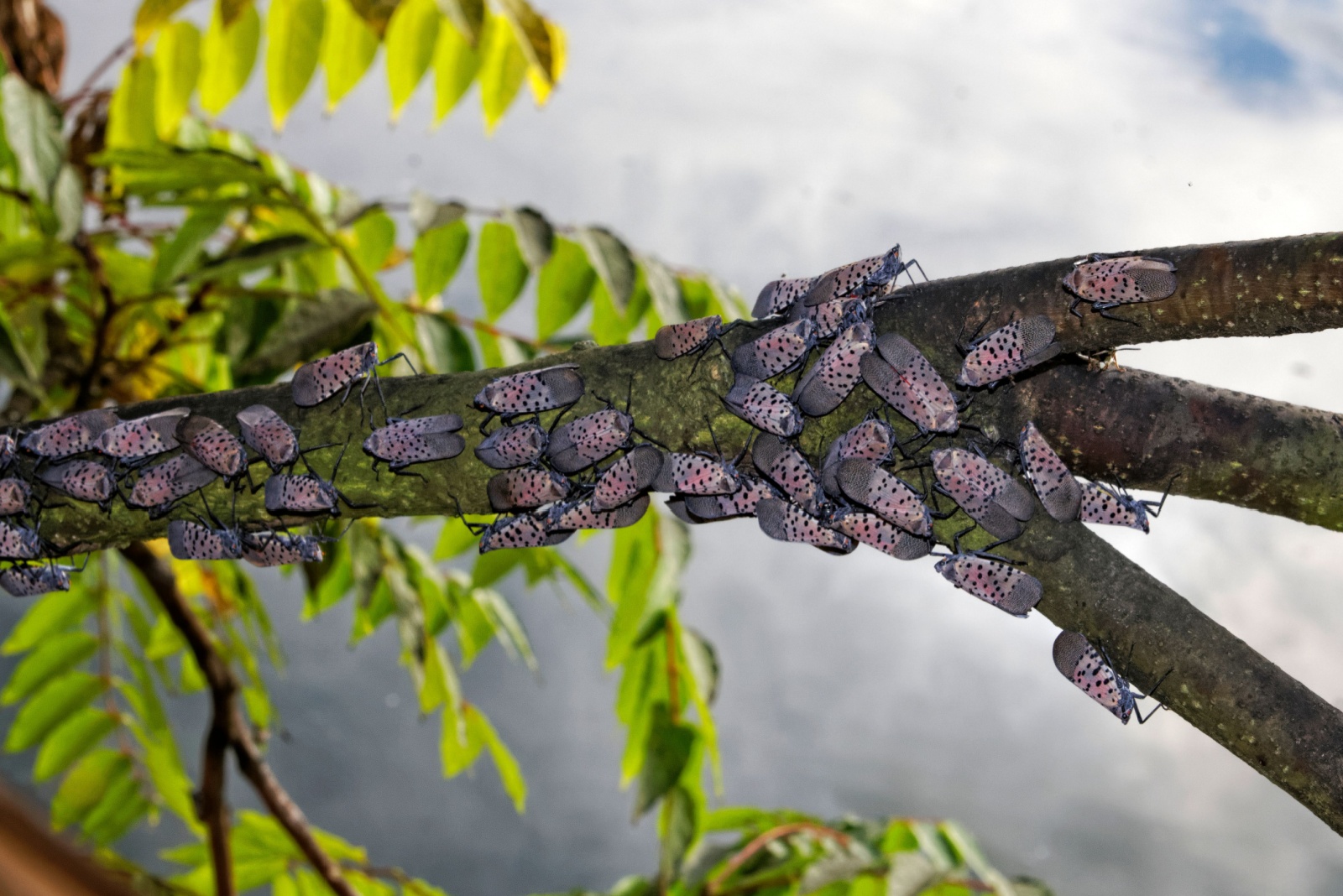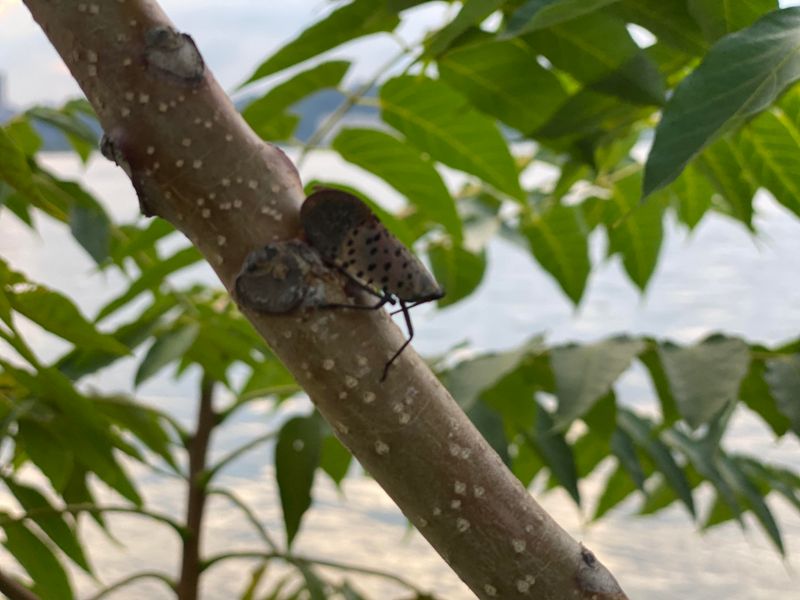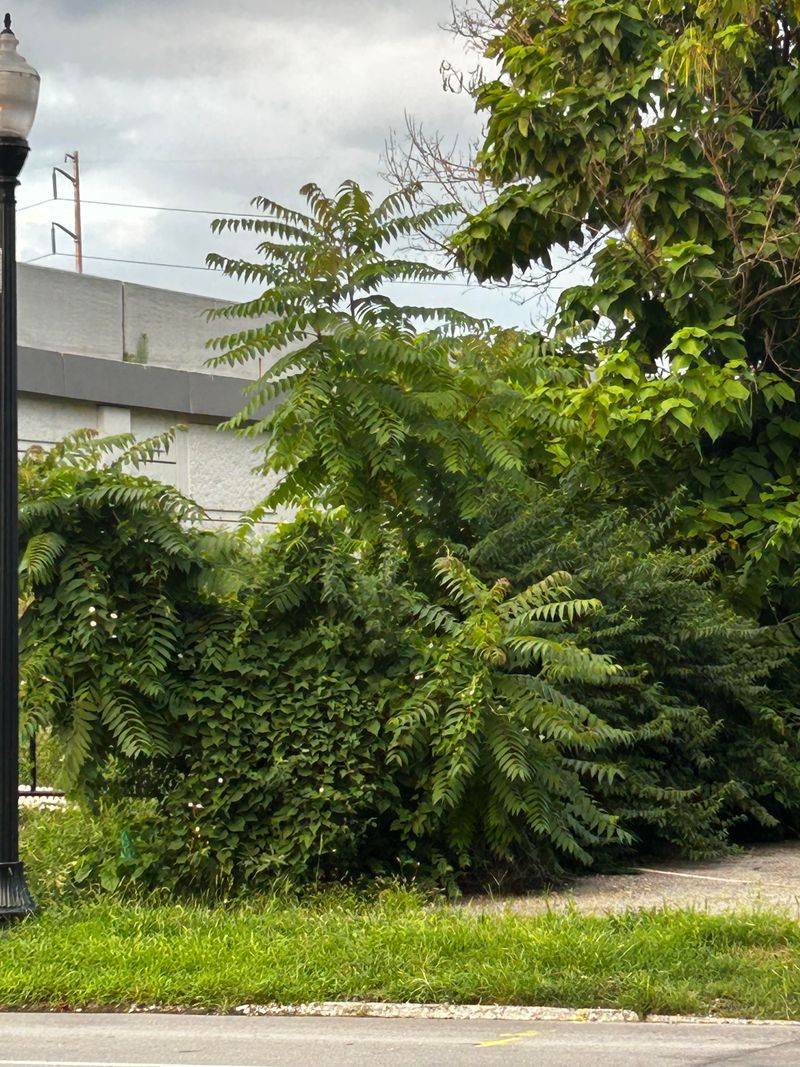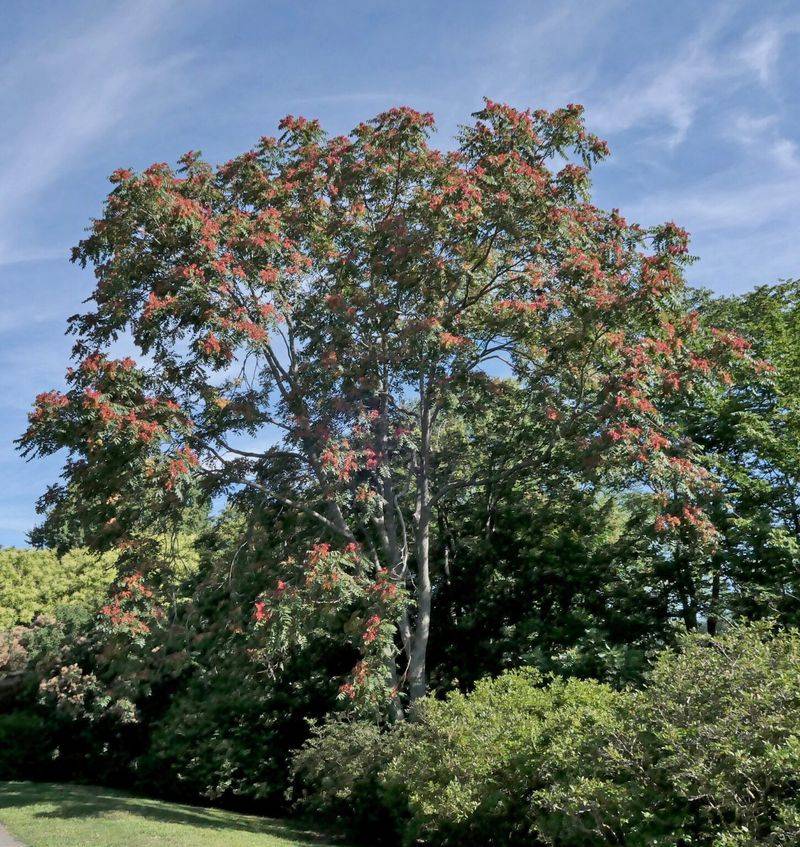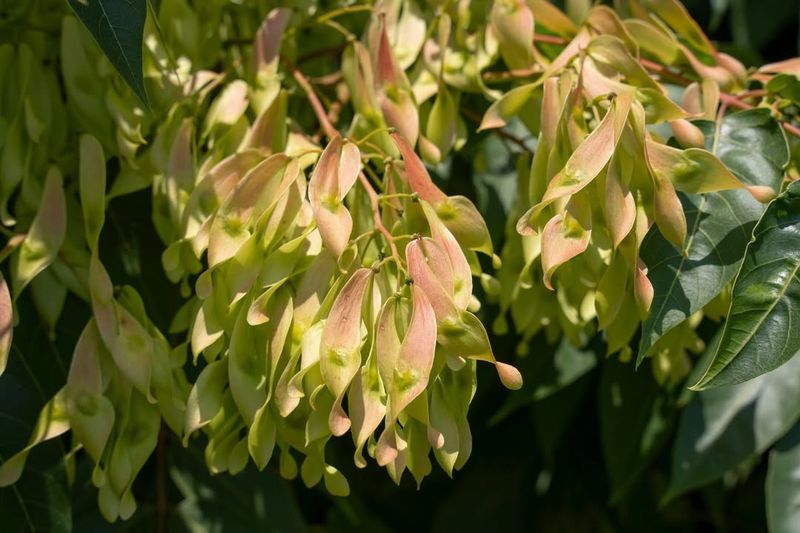Tree-of-heaven might sound like a blessing, but in Maryland, it’s more of a curse. This fast-growing tree has become a favorite host for the destructive spotted lanternfly, an invasive insect that threatens crops, orchards, and native plants across the state.
Planting tree-of-heaven only makes the lanternfly problem worse, giving these pests a perfect place to feed and multiply. Understanding why this tree should stay out of your yard is the first step in protecting Maryland’s environment.
1. Tree-Of-Heaven Acts As A Magnet For Spotted Lanternflies
Spotted lanternflies are drawn to tree-of-heaven like moths to a flame. Female lanternflies prefer laying their eggs on this tree’s bark, creating clusters of 30 to 50 eggs that hatch into hungry nymphs each spring.
Once established, these insects swarm the tree, feeding on its sap and spreading rapidly to nearby plants. Maryland gardeners who plant this tree unknowingly create breeding grounds that fuel lanternfly populations throughout the region.
Removing tree-of-heaven from your property helps break this cycle and protects neighboring farms and gardens from infestation.
2. This Invasive Tree Outcompetes Native Maryland Species
Tree-of-heaven grows incredibly fast, sometimes shooting up several feet in a single season. Its aggressive root system releases chemicals that poison the soil, preventing native Maryland trees like oaks, maples, and dogwoods from thriving nearby.
This chemical warfare, called allelopathy, gives tree-of-heaven an unfair advantage in forests and yards. Native wildlife depends on local trees for food and shelter, but tree-of-heaven offers little ecological value.
By crowding out beneficial species, this invasive plant weakens Maryland’s natural ecosystems and reduces biodiversity across the state.
3. Lanternfly Damage Threatens Maryland Agriculture And Orchards
When lanternflies feed, they drain sap from plants and excrete a sticky substance called honeydew that coats leaves and fruit. This honeydew attracts sooty mold, which blocks sunlight and weakens plants over time.
Maryland’s vineyards, apple orchards, and peach farms face serious economic losses when lanternflies infest their crops. The insects also damage hardwood trees used for timber and maple trees tapped for syrup.
Avoiding tree-of-heaven helps reduce lanternfly populations, protecting both backyard gardens and commercial agriculture throughout Maryland’s farming communities.
4. Controlling Tree-Of-Heaven Is Difficult And Costly
Once tree-of-heaven takes root, getting rid of it becomes a major challenge. Simply cutting it down triggers the root system to send up dozens of new shoots, making the problem worse.
Proper removal requires herbicide treatment or repeated cutting over several seasons, demanding time, money, and effort. Maryland homeowners often underestimate how persistent this tree can be, only discovering too late that it spreads through underground roots into neighboring yards.
Preventing its planting saves you from years of frustrating and expensive removal work down the road.
5. Maryland Laws Discourage Planting And Encourage Removal
Recognizing the threat, Maryland officials actively discourage planting tree-of-heaven and encourage property owners to remove existing trees responsibly. State extension services offer guidance on proper removal techniques that prevent regrowth and minimize environmental harm.
Some counties provide resources and workshops to help residents identify and manage this invasive species. Cooperating with these efforts strengthens community-wide defenses against lanternfly spread.
Choosing native alternatives instead shows respect for Maryland’s natural heritage and helps neighbors protect their properties from invasive pests and plants alike.
6. Tree-Of-Heaven Creates Perfect Breeding Grounds For Lanternfly Eggs
Female spotted lanternflies prefer tree-of-heaven bark above all other surfaces when laying their eggs. Each egg mass contains 30 to 50 eggs covered in a waxy coating that looks like dried mud. When spring arrives, hundreds of tiny nymphs hatch and immediately start feeding on nearby plants.
Planting tree-of-heaven essentially builds an apartment complex for these destructive insects right in your backyard. The rough, deeply-grooved bark provides ideal protection for egg masses during winter months. Removing or avoiding this tree eliminates prime real estate that lanternflies desperately need to multiply.
Homeowners who cut down tree-of-heaven often find dozens of egg masses hidden in the bark crevices, preventing thousands of future lanternflies from hatching.
7. The Tree Releases Toxic Chemicals That Harm Your Garden And Soil
Beyond attracting lanternflies, tree-of-heaven releases natural chemicals called allelopathic toxins through its roots and fallen leaves. These substances poison the surrounding soil and prevent other plants from growing nearby.
Your vegetable garden, flower beds, and lawn can suffer significantly if tree-of-heaven takes root nearby. Native Maryland plants struggle to compete against these chemical weapons, often wilting or dying within the tree’s shadow. The toxins build up over time, making soil recovery slow even after removal.
Gardeners may notice bare patches or stunted growth around these invasive trees. Choosing native alternatives like red maple or tulip poplar supports healthy soil chemistry instead of destroying it for years to come.

